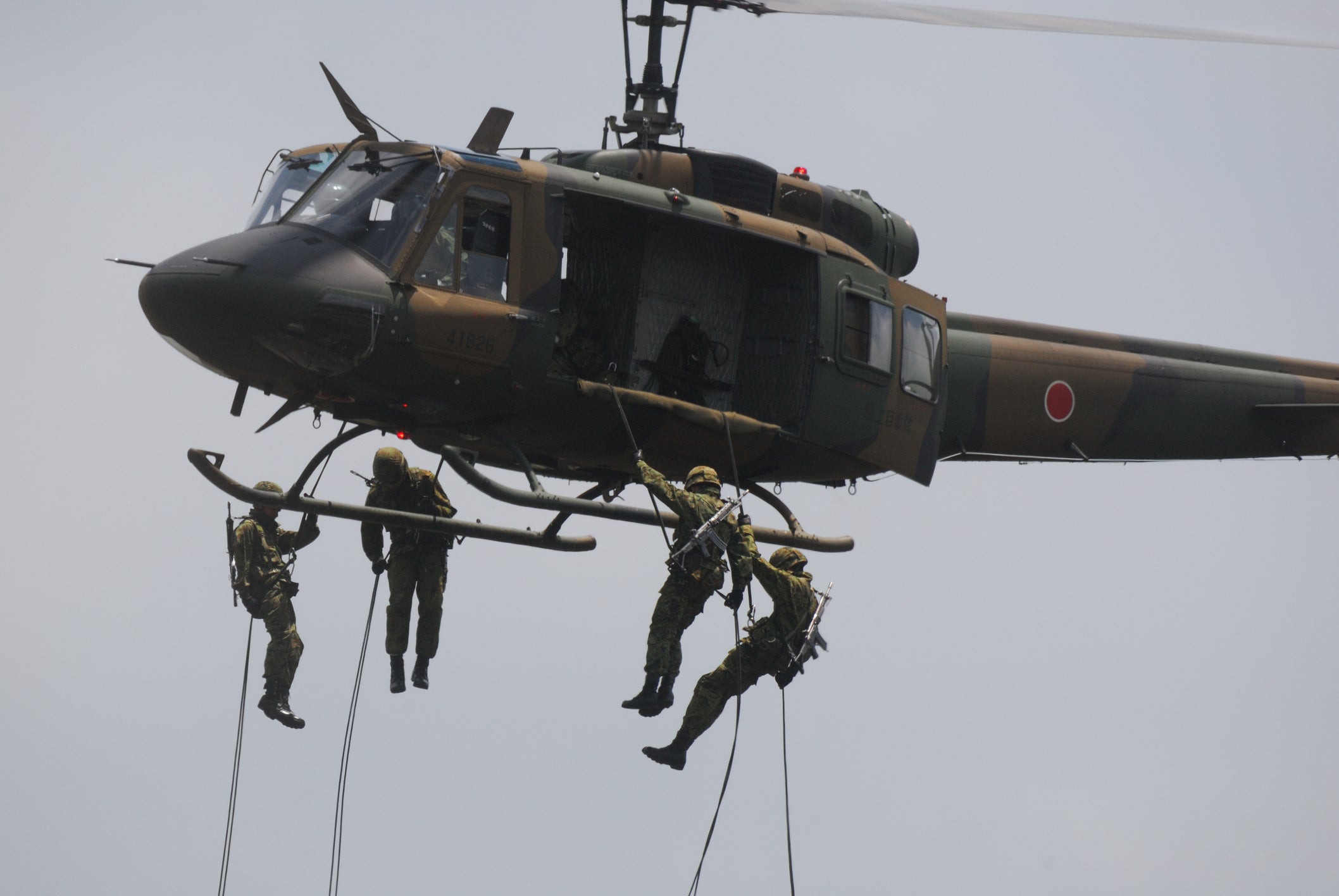The importance of helmets in disaster prevention and their types of uses
table of contents
Introduction
1. How to choose a disaster prevention helmet
2. Types and uses of disaster prevention helmets
summary
Introduction
Japan is a country prone to natural disasters such as earthquakes and volcanic eruptions. Natural disasters are difficult to predict and we do not know when or where they will occur. In order to protect yourself and your family when a disaster occurs, it is important to prepare disaster prevention goods in advance.
Well-known disaster prevention goods include flashlights, emergency food, and cold weather gear, but there is one more thing you should not forget. It's a helmet.
A helmet is necessary to protect your precious head in the event of a disaster. In disasters such as earthquakes and volcanic eruptions, there is a high possibility of serious head injuries caused by collapsed buildings, furniture, or falling objects. The head is the most important part of the human body and contains the brain and sensory organs such as the eyes and ears. Injuries to the head are not only life-threatening, but can also leave behind sequelae and disabilities.
A helmet protects your head from these hazards and helps reduce impact and heat. During disasters, it is recommended to wear a helmet both indoors and outdoors. Wearing a helmet at evacuation centers and temporary housing also increases safety.
However, there are many different types of helmets. What kind of disaster prevention helmet should I choose? Here, we will explain how to choose a disaster prevention helmet, its types and uses.
1. How to choose a disaster prevention helmet
When choosing a disaster prevention helmet, pay attention to the following three points.
1-1 Must be a product that has passed national certification.
- Helmets have national certification, and those that meet certain standards are called "hard hats." There are three types of hard hats: ``For flying and falling objects'', ``For fall protection'', and ``Electrical use'', but among these, the one that can be used as a disaster prevention helmet is ``For flying and falling objects''. is.
- Hard hats for flying and falling objects have the function of preventing or reducing the dangers caused by flying or falling objects from above. If the product has passed national certification, its quality and performance are guaranteed and you can use it with confidence.
・You can check whether the product has passed national certification by checking whether the inside of the helmet has the "protective helmet" mark and the words "For flying/falling objects" written on it. When purchasing a disaster prevention helmet, be sure to check this mark and text.
1-2 The material must be resistant to heat.
・When choosing a disaster prevention helmet, pay attention to the material of the helmet. Helmets are made of plastic, and some plastics harden when exposed to heat, while others soften (melt) when exposed to heat.
- When a disaster such as an earthquake occurs, fires may occur at the same time. If you use a plastic helmet that softens with heat, there is a risk that the helmet will melt at the scene of a fire, leaving you unable to protect your head.
・For disaster prevention helmets, choose one made of heat-resistant material called FRP (fiber-reinforced plastic). FRP is made by hardening glass fiber, carbon fiber, etc. with plastic, and has both strength and lightness that can withstand high temperatures.
1-3 The size and shape must match
・When choosing a disaster prevention helmet, it is important that the size and shape match your head and that of your family. A helmet that is the wrong size or shape may shift or come off when you wear it. You may also feel discomfort or pressure.
・The size of a disaster prevention helmet is expressed by the head circumference. You can measure your head circumference yourself, but there may be errors depending on how you measure it. Therefore, we recommend that you try it on.
- Disaster prevention helmets come in a variety of shapes, including round and square. Don't choose the shape just based on your preference or appearance. Depending on the shape, it may obstruct vision or hearing, or impair movement or ventilation. Choose one that suits your head shape and face shape.
- There are generally three sizes of disaster prevention helmets : S ( 54-56cm ), M ( 57-59cm ), and L ( 60-62cm ). However, these sizes alone may not suit people with small head circumferences, such as children and women, or adults with large head circumferences.
Therefore, small-sized helmets such as XS ( 51-53cm ) and XXS ( 48-50cm ) are recommended for people with small head circumferences , such as children and women, while XL ( 63-65cm ) and XXL are recommended for adults with large head circumferences . You can choose a larger size helmet (66-68cm ) .
It is recommended that each person have an emergency helmet. However, as the child grows, the size must be checked and replaced regularly. Also, women's size may change depending on their hairstyle and hair accessories. Therefore, it is important to measure your or your family's head circumference and choose the most suitable helmet size.
2. Types and uses of disaster prevention helmets
When choosing a disaster prevention helmet, you should pay attention to the points mentioned above, but there is more to it. There are various types of disaster prevention helmets, each with their own characteristics and uses. Here, we will introduce the types of typical disaster prevention helmets, their characteristics, and uses.
2-1 hard hat
-Hard hats are helmets often seen at construction sites and factories. It has a round shape with a protrusion on the top of the head, and has the function of protecting the head from flying and falling objects. If the product has passed national certification, it is strong enough to withstand a 5kg object falling from a height of 3m .
- There are hard hats made of FRP and ABS resin. FRP products are resistant to heat and can be used at fire sites, but they are heavy and expensive. Items made of ABS resin are light and inexpensive, but they are sensitive to heat and may melt.
・Hard hats are the most common type of disaster prevention helmet. By keeping it on hand at home or at work, you can easily wear it in an emergency. There are also a wide variety of colors and designs, so you can choose the one that suits you.
2-2 motorcycle helmet
・A motorcycle helmet is a helmet worn when riding a motorcycle or bicycle. It has a shape that covers not only the head but also the face and neck, and has the function of protecting the head in the event of a fall or collision. If the product has passed national certification, it is strong enough to withstand a 5kg object falling from a height of 3m .
- Motorcycle helmets are made of FRP or polycarbonate. FRP products are resistant to heat and have high impact resistance, but they are heavy and expensive. Polycarbonate products are lightweight and inexpensive, but they are sensitive to heat and may deteriorate due to UV rays.
・Motorcycle helmets can also be used as disaster prevention helmets. For example, when using a motorbike or bicycle when evacuating due to an earthquake or tsunami, or when escaping from a fire scene to protect the face and neck. However, it is not recommended to wear motorcycle helmets for long periods of time as they have poor ventilation and can make you feel hot.
2-3 climbing helmet
・Climbing helmets are helmets worn for mountain climbing, rock climbing, etc. It has a square shape with protrusions on the front, back, left and right sides of the head, and has the function of protecting the head from flying and falling objects, rock walls, etc. If the product has passed national certification, it is strong enough to withstand a 5kg object falling from a height of 2m .
・Climbing helmets are available in FRP and polypropylene. FRP products are resistant to heat and have high impact resistance, but they are heavy and expensive. Polypropylene products are light and inexpensive, but they are sensitive to heat and may deteriorate due to UV rays.
・Climbing helmets can also be used as disaster prevention helmets. For example, it is used to protect the head when escaping from a collapsed building or fallen mud due to an earthquake or eruption, or when living in an evacuation center or temporary housing. However, you should be careful with climbing helmets as they can impede your vision and hearing.
2 -4 Substitutes
Disaster prevention helmets are necessary disaster prevention goods to protect your head in the event of a disaster, but they may not be readily available or may be bulky and difficult to carry. In such a case, let's look for something that can be replaced with a helmet.
Examples of helmet replacements include:
・Metal or plastic containers such as buckets and pots: If you secure these containers over your head, they can protect you from some impact from flying or falling objects. However, avoid items that are sensitive to heat or rust easily.
・Paper such as magazines and newspapers: By wrapping these around your head and securing them with tape or string, you can reduce the impact of flying or falling objects. However, be careful as there is a high possibility that it will get wet or tear.
・Clothes such as hats and towels: By placing these items over your head and securing them with tape or string, you can reduce the slight impact from flying or falling objects. However, its effectiveness is limited because its shock absorption is low.
- Bicycle helmets and sports helmets: Wearing these on your head can protect you from considerable impact from flying and falling objects. However, please note that the standards and strength may be different compared to disaster prevention helmets.
As mentioned above, there are various alternatives to helmets, but all of them have some disadvantages compared to genuine disaster prevention helmets. Therefore, it is advisable to prepare a disaster prevention helmet as much as possible.
summary
We explained the importance of helmets in disaster prevention, their types, and their uses. A helmet is a disaster prevention item that is necessary to protect yourself and your family in the event of a disaster. When choosing a disaster prevention helmet, make sure that it has passed national certification, is made of heat-resistant material, and is the right size and shape. Also, the characteristics and uses differ depending on the type of helmet. Choose the one that best suits your situation and needs.
It is recommended that each person have an emergency helmet. You never know when a disaster will occur. By preparing in advance, you can act calmly and not panic in the event of a disaster. Buy an emergency helmet to protect yourself and your family.







